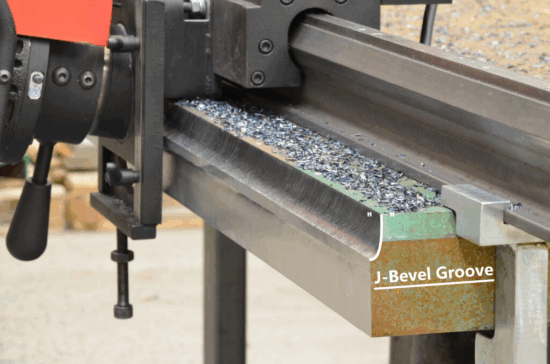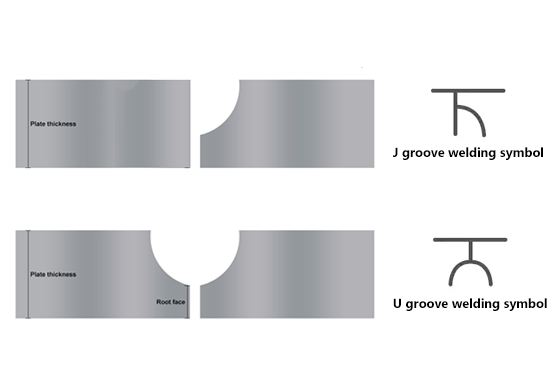What You Need to Know About J Groove Weld: Techniques and Applications
When it comes to welding techniques, the J groove weld stands out for its versatility and strength. This style of welding is particularly favored in various industries due to its unique design and effectiveness in joining materials. Understanding this technique, its benefits, and its applications will empower you to make informed decisions when you consider using it.
目录
切换What is a J Groove Weld?
Definition and Purpose
A J groove weld is characterized by its distinctive shape, where the joint resembles the letter “J.” This configuration creates a specific space between the parts being joined, ensuring a more controlled heat input and allowing for deeper penetration during the welding process. This process is particularly important when welding thicker materials or those that require additional strength and durability.

Source:https://www.promotech.eu/en/blog/how-to-prepare-surface-for-j-groove-welds/
J Groove Weld Symbol
-bevelling is the base for many types of groove joints, such as single-J, double-J, single-U, and double-U. These joints share a similar principle in their curved bevel preparation, which helps focus the heat input and improve penetration.
Let’s take a closer look at their welding symbols, which are essential for reading technical drawings and fabrication plans. J and U groove symbols appear very similar—both use a curved line to represent the shape of the joint—but differ in symmetry and bevel application.
Below: Common welding symbols for J and U groove welds:

Benefits of J Groove Weld
One of the primary benefits of J groove welds is their enhanced strength. Because of the design, this type of weld facilitates deeper penetration and a more robust bond between the materials. For instance, in the construction industry, when steel beams must be connected to form a stable structure, a J groove weld is often the preferred choice. This is because the weld not only reinforces the joint but also reduces the likelihood of future failures.
Another notable advantage is the aesthetic appeal. For projects where the appearance of the weld is crucial, such as in architectural applications or visible structures, a J groove weld can provide a cleaner, more attractive finish. This is particularly important for high-profile projects where visuals matter as much as functionality.
Additionally, J groove welds are known for their ability to minimize distortion. During the welding process, heat is applied to the materials, which can lead to warping. However, the design of the J groove weld allows for better heat distribution, resulting in less distortion overall. This is particularly beneficial in industries like pipelines and shipbuilding, where maintaining shape and alignment is critical.
Applications of J Groove Weld
The applications of J groove welds span across various fields, highlighting their versatility. Below are some of the key areas where this welding technique is commonly used:
1. Construction Industry
In the construction sector, J groove welds are often employed to connect large structural elements, such as steel beams and columns. For example, when assembling a high-rise building, workers might use J groove welds to join the horizontal beams to vertical supports, ensuring a solid foundation that can withstand heavy loads.
2. Shipbuilding
Another significant application is in shipbuilding. The hull of a ship is subjected to high pressures and varying temperatures, making strong welds essential. The J groove weld provides the necessary strength to withstand the harsh marine environment while also offering resistance against corrosion. In this case, using a J groove weld can significantly enhance the durability of the vessel.
3. Pipeline Construction
When constructing pipelines, especially for oil and gas, the integrity of the joints is paramount. J groove welds are frequently applied here, as they offer deep penetration and a robust connection, minimizing leaks and failures over time. For instance, a J groove weld can ensure that a joint between two large pipes remains sealed under high pressure, which is critical for transporting materials safely.

4. Automotive Industry
In the automotive sector, the J groove weld is commonly utilized in the fabrication of frames and body components. Due to the need for lightweight yet strong structures, engineers often employ this welding technique. The added strength from J groove welds helps cars maintain structural integrity during crashes, making vehicles safer for occupants.
Key Considerations When Choosing J Groove Weld
When considering the use of J groove welds, there are several factors to think about. First, assess the materials you are working with. The technique is particularly effective on thicker materials. If your project involves thin sheets, you might need to explore alternative welding techniques.
Next, consider the environment. For example, if you are welding in areas exposed to moisture or extreme temperatures, additional protective measures may be necessary to prevent corrosion. Making sure that welding equipment is suitable for the environment will ensure that the J groove weld remains effective and durable.
Finally, a J-groove is hard to make by hand. It’s difficult to keep the shape consistent, and manual work can be tiring. Most jobs require a beveling machine to get an even result, which adds cost and makes the process less flexible.
结论
The J groove weld is a powerful technique that offers numerous benefits and applications across various industries. Whether you are involved in construction, shipbuilding, pipeline installation, or automotive manufacturing, understanding this welding method can significantly enhance your projects. With its strength, aesthetic appeal, and capability to minimize distortion, the J groove weld holds an essential place in the welding community.
As you consider your next welding project, remember the advantages offered by J groove welds. By recognizing its benefits and applications, you can better assess how this technique can meet your specific needs, providing strong, durable, and visually appealing welds for years to come. Understanding the ins and outs of J groove weld can make a world of difference in your welding success.
